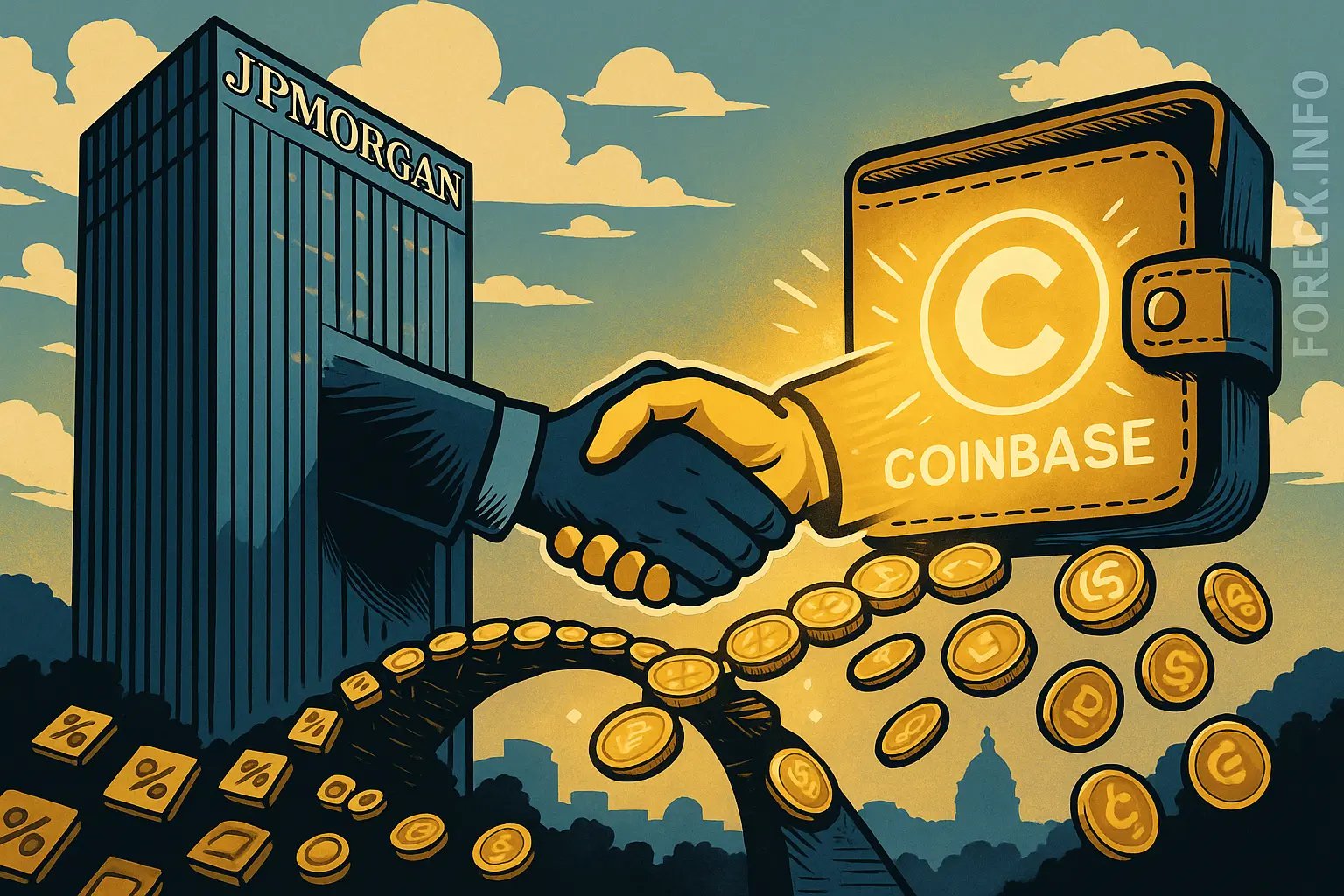Key timeline: the joint programme is scheduled to launch in $2026, when retail customers will gain the option to link their checking accounts directly to a Coinbase wallet. JPMorgan estimates its cardholders generated roughly $8 billion worth of points last year, implying a potential conversion flow of up to $80 million in USDC each month if even 10 % participate.
We're partnering with @Chase to accelerate crypto adoption.
— Coinbase 🛡️ (@coinbase) July 30, 2025
Coming soon:
→ Use Chase credit cards on Coinbase
→ Redeem rewards points for USDC
→ Directly link Chase accounts to Coinbase
Bridging tradfi to crypto. pic.twitter.com/ObxIaMWI3J
The initiative goes beyond loyalty redemptions. Coinbase plans to embed JPMorgan credit-card rails on its platform, enabling cardholders to fund crypto purchases instantly without leaving the exchange interface. From a capital-markets perspective, this eliminates the settlement lag between banking and blockchain networks—an efficiency gain that could tighten bid-ask spreads for retail crypto traders.
Why This Matters for the Crypto Rewards Program Market
With crypto rewards programs becoming a high-frequency search term among fintech enthusiasts, the partnership sets a regulatory benchmark. JPMorgan’s risk team has created a collateralisation model that treats USDC similarly to short-duration Treasuries, citing Circle’s monthly attestation reports. That model could unlock secured lending backed by stablecoins—an area in which at least five U.S. banks are currently running internal pilots.
By integrating a bank-grade rewards ecosystem into Coinbase, the two firms aim to lower the perceived counterparty risk of holding digital assets. For context, JPMorgan processed $11 trillion in wholesale payments daily in $2024, dwarfing Coinbase’s $1.2 trillion annual spot-trading volume. The relative scale highlights how even a modest migration of traditional loyalty flows could deepen on-chain dollar liquidity.
Competitive Landscape and Strategic Implications
The move intensifies competition with card issuers offering Bitcoin cash-back. While those programmes expose users to price volatility, JPMorgan’s USDC rewards neutralise market risk, positioning the bank to capture yield-seeking but risk-averse customers. Rival megabanks have experimented with tokenised deposits, yet none have rolled out a retail-facing product of comparable scale.
Analysts note that the collaboration arrives amid a shift in stablecoin dominance. USDC’s circulating supply rebounded to $34 billion in Q2 $2025 after dipping below $25 billion the previous winter, driven by rising institutional demand. A seamless on-ramp from credit-card points could accelerate that recovery and push USDC’s market share above 30 % by early $2027, according to projections from blockchain-data firm Glassnode.
Regulatory Optics and Jamie Dimon’s Stance
Although JPMorgan CEO Jamie Dimon has publicly criticised Bitcoin, the bank’s treasury unit has quietly expanded its digital-asset initiatives. Executives argue that stablecoins pegged to fiat currencies pose fewer balance-sheet concerns than unbacked tokens. The partnership with Coinbase therefore serves as a capital-efficient bridge—often referred to in industry circles as TradFi-to-crypto connectivity—while allowing the bank to maintain a cautious posture toward volatile assets.
The compliance architecture includes real-time AML monitoring and a daily reconciliation feed that matches on-chain transfers to customer reward-points debits. This framework could become a template for other financial institutions exploring similar products, especially as regulators press for tighter oversight of stablecoin reserves.
Bottom Line
By monetising unused reward points through a stablecoin lens, JPMorgan and Coinbase are effectively tokenising a dormant balance-sheet liability and repackaging it as a digital-asset liquidity source. The deal highlights three converging trends: tokenised loyalty, bank-exchange synergies, and the institutional embrace of USDC stablecoin utility. Investors should track adoption rates closely; if conversion volumes hit even 5 % of eligible points, the programme could channel more than $4 billion in fresh liquidity into the crypto ecosystem over its first five years.

